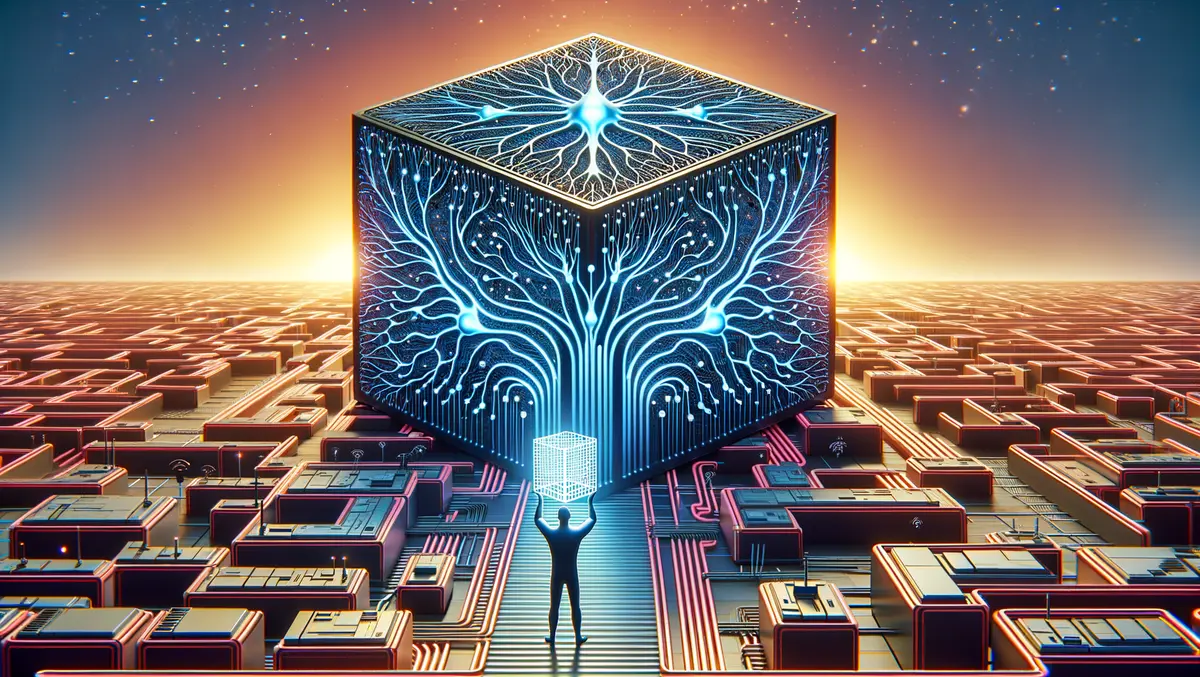Intel, a pioneer in semiconductor technology, has achieved a remarkable feat by unveiling the world’s largest neuromorphic computer, named Hala Point.
Intel, a pioneer in semiconductor technology, has achieved a remarkable feat by unveiling the world’s largest neuromorphic computer, named Hala Point.
Designed to emulate the intricate operations of the human brain, this groundbreaking device marks a significant leap in artificial intelligence (AI) technology. However, while Intel aims to push the boundaries of AI capabilities, experts caution that several engineering challenges must be addressed before neuromorphic computing can surpass current standards.
Neuromorphic computers fundamentally differ from conventional machines in their architecture and operation. While traditional computers rely on processors to execute tasks and store data in separate memory units, neuromorphic devices employ artificial neurons for both computation and memory functions, mirroring the functionality of the human brain. This innovative approach eliminates data transfer bottlenecks, potentially leading to far greater energy efficiency.
Intel asserts that Hala Point, powered by 1.15 billion artificial neurons distributed across 1152 Loihi 2 Chips, can perform a staggering 380 trillion synaptic operations per second.
Remarkably, despite its immense processing power, the device occupies a space equivalent to just six standard server racks, comparable to that of a household microwave oven.
According to Mike Davies, a key figure at Intel, the scalability of Hala Point hints at the possibility of even larger neuromorphic systems in the future.
While Hala Point represents a significant advancement in neuromorphic computing, it faces stiff competition from upcoming projects like DeepSouth, expected to achieve 228 trillion synaptic operations per second. However, the real challenge lies not in hardware scalability but in developing the requisite software infrastructure to effectively harness the potential of these machines.
Davies acknowledges that software development remains a critical bottleneck in realizing the full capabilities of neuromorphic computing.
Intel envisions Hala Point as a platform capable of continuous learning, potentially revolutionizing AI by enabling models to adapt and evolve over time without the need for extensive retraining. However, some experts remain skeptical, dismissing such claims as mere hype. James Knight, a researcher at the University of Sussex, cautions that while neuromorphic hardware holds promise, current limitations in training methods and software integration pose significant hurdles.
Knight highlights the inherent differences between training AI models on traditional hardware, which allows for parallel processing, and neuromorphic systems, which operate with a single input.
He suggests that adapting existing models like ChatGPT to neuromorphic hardware could take decades, if not longer, given the complexity of the task. Nevertheless, Davies remains optimistic, emphasizing the potential for neuromorphic systems to facilitate continuous learning and efficiency gains in the future.
Looking ahead, Knight sees neuromorphic computing as a catalyst for tackling a wide range of computer science challenges while also advancing the quest for artificial general intelligence (AGI).
Unlike current AI models, which rely on massive language models, neuromorphic technology offers a more promising path towards achieving human-like intelligence. As researchers continue to explore the possibilities of neuromorphic computing, the future of AI holds both excitement and challenges on the road to innovation and discovery.
